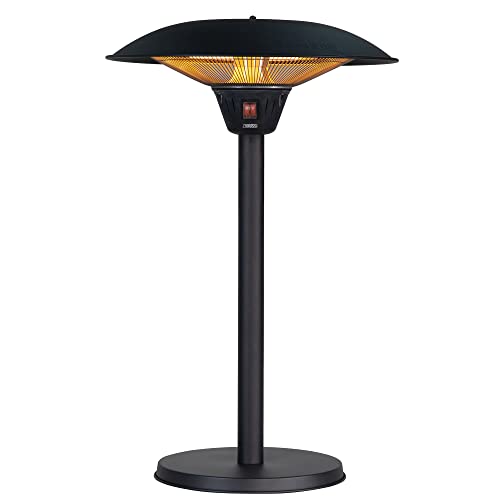How To Explain Purchase Patio Heaters To Your Grandparents
A Comprehensive Guide to Purchasing Patio Heaters
As outdoor living areas end up being significantly popular, the demand for patio heaters has surged. These devices enable house owners to extend their outdoor enjoyment well into the cooler months. However, with a multitude of options offered on the market, picking the ideal patio heater can seem overwhelming. This guide intends to provide insightful information to help purchasers make informed choices, covering types, functions, aspects to think about, and answers to frequently asked concerns.
Kinds Of Patio Heaters
Patio heaters been available in various design and styles, accommodating different outdoor spaces and choices. Here's an introduction of the most common types:
Type
Description
Gas Patio Heaters
Portable heaters that utilize lp tanks. They are ideal for locations without electrical energy and are simple to move around.
Natural Gas Patio Heaters
Connected directly to a gas line, these heaters are stationary but offer endless heating without the requirement to change tanks.
Electric Patio Heaters
Plugged into an electric outlet, they are energy-efficient, simple to use, and require very little maintenance. They are available in different heating capabilities.
Infrared Patio Heaters
Usage convected heat technology to warm particular locations and people instead of the air. This can be particularly efficient in windy conditions.
Fire Pits
Not conventional patio heaters, fire pits can serve double functions of heating and offering a space for roasting marshmallows or delighting in a campfire ambiance.
Aspects to Consider When Purchasing Patio Heaters
When searching for a patio heater, a number of crucial elements need to be considered to make sure a notified choice. Here are essential functions to assess:
Heat Output:
- Patio heaters differ in BTU (British Thermal Units); greater BTUs correspond to more heat.
- For typical outdoor spaces, think about heaters with an output of 40,000 – 50,000 BTUs for sufficient warmth.
Fuel Type:
- Decide between gas, natural gas, or electric based on accessibility and benefit.
- Think about the initial cost and ongoing fuel expenditures, as they can differ considerably.
Portability:
- Determine whether a portable heater or a more irreversible service is needed based upon your outdoor space.
- Portable heaters offer flexibility, while natural gas heaters are more steady but require setup.
Security Features:
- Look for functions like automated shut-off switches, tip-over defense, and heat-resistant products.
- Safety needs to be a critical issue, especially in windy areas or around children and pets.
Style and Aesthetics:
- Consider the design of the heater to guarantee it complements your outdoor decor.
- Choose in between traditional and modern designs for a more defined aesthetic.
Ease of Use and Maintenance:
- Assess how simple the heater is to spark, change the heat settings, and tidy after use.
- Electric designs usually require less maintenance compared to propane or natural gas units.
Benefits and drawbacks of Common Patio Heater Types
Type
Pros
Cons
Propane Patio Heaters
Portable, high heat output, easy to set up
Requires tank replacement, can be expensive to run
Natural Gas Patio Heaters
Unlimited heating, low operating cost
Requires professional setup
Electric Patio Heaters
Energy effective, essentially maintenance-free
Minimal variety, reliant on electrical energy supply
Infrared Patio Heaters
Instantaneous heating, minimal wind impact
Typically lower BTU output, particular location protection
Fire Pits
Ambiance and discussion starter, double purpose
Requires wood or gas, can be less effective as a heater
Frequently Asked Question about Patio Heaters
1. How much heat does a patio heater supply?
The heat output of patio heaters is determined in BTUs. The majority of outdoor heaters produce in between 30,000 and 50,000 BTUs, adequate to warm a common outdoor seating location.
2. Patio Heaters Clearance Sale be used in the rain?
While some patio heaters are created to be weather-resistant, it is generally recommended to keep them protected during rainy conditions to prevent damage and make sure safe operation.
3. Do patio heaters need much upkeep?
Most patio heaters do not need extensive maintenance. Routine cleansing and inspecting for gas leakages in lp or natural gas designs are advised to ensure longevity and safety.
4. For how long do lp tanks last in patio heaters?
A basic 20-pound gas tank can last between 10 to 12 hours on high settings, depending on the heater's BTU output.
5. Can I use an electric patio heater indoors?
Electric patio heaters are usually created for outdoor usage; however, if they are ranked for indoor usage, they can be utilized in well-ventilated areas. Constantly guarantee safety procedures are followed.
In summary, purchasing a patio heater includes considering various elements such as heat output, fuel type, portability, safety features, and looks. By comprehending the various types offered and the advantages and disadvantages associated with each, purchasers can confidently select a patio heater that best fits their outdoor home. Offered the versatility and convenience these heaters offer, they can change any outdoor area into a warm and inviting retreat for household and friends to gather, even throughout cooler months. Whether enjoying a cup of tea on a cold night or hosting a lively gathering, a patio heater can make all the distinction.
